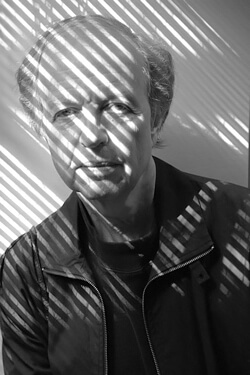Harvey Stein is a professional photographer, teacher, lecturer, author and curator based in New York City.
He currently teaches at the International Center of Photography. Stein is a frequent lecturer on photography both in the United States and abroad. He was the Director of Photography at Umbrella Arts Gallery, located in the East Village of Manhattan from 2009 until 2019 when it lost its lease and closed.. He has also been a member of the faculty of the School of Visual Arts, New School University, Drew University, Rochester Institute of Technology and the University of Bridgeport. A recipient of a Creative Arts Public Service (CAPS) fellowship and numerous artist in residency grants, Stein's eighth and latest book, Mexico Between Life and Death, was published in the fall of 2018 by Kehrer Verlag (Germany). A new book, Then and There: Mardi Gras 1979 will be published by Zatara Press in the Spring of 2020. Other books of Stein's photographs are Parallels: A Look at Twins, E.P. Dutton (1978); Artists Observed, Harry Abrams, Inc. (1986); Coney Island, W.W. Norton, Inc. (1998); Movimento: Glimpses of Italian Street Life, Gangemi Editore, Rome (2006); Coney Island 40 Years, Schiffer Publishing, (2011); Harlem Street Portraits, Schiffer Publishing (2013); and Briefly Seen New York Street Life, Schiffer Publishing (2015). Stein's photographs and portfolios have been published in such periodicals as The New Yorker, Time, Life, Esquire, American Heritage, Smithsonian, The New York Times, Reader's Digest, Glamour, GQ Magazine (Mexico), Forbes, Psychology Today, Playboy, Harpers, Connoisseur, Art News, American Artist, New York, People, Der Spiegel, Die Zeit, The Hopkins Review (cover), Sun Magazine (cover) and all the major photo magazines, including Camera Arts, Black & White Magazine (cover), Shutterbug, Popular Photography, American Photo, Camera, Afterimage, PDN, Zoom, Rangefinder, Photo Metro, fotoMagazine (Germany), photo technique, Zeke and View Camera.
Stein's photographs have been widely exhibited in the United States and Europe — 86 one-person and over 165 group shows to date.
He has curated 64 exhibits since 2007. His photographs are in more than 57 permanent collections, including the George Eastman Museum, Bibliotheque Nationale, the Art Institute of Chicago, the Museum of Fine Arts, Houston, the Brooklyn Museum of Art, the New Orleans Museum of Art, the International Center of Photography, the Denver Museum of Art, the Carnegie Museum of Art (Pittsburgh), the Portland (Oregon) Museum of Art, the Museum of the City of New York, Museet for Fotokunst (Odense, Denmark), Musee De La Photographie (Charleroi, Belguim), the Portland (Maine) Museum of Art, the American Museum of Natural History, the Santa Barbara Museum of Art, the Addison Gallery of American Art, The New York Historical Society and Museum, The Brooklyn Historical Society, and among others, the corporate collections of Johnson & Johnson, Hewlett Packard, LaSalle Bank (Chicago), Barclay Bank and Credit Suisse. Stein's work is represented by Sous Les Etoiles Gallery, New York City.
Statement
What do our photos say?
That is an important question that we all wrestle with. I have always wanted to do strong and meaningful images. Not all our photos can be that, some are what I call "throwaways", fun and silly and not too serious. But basically I want to say something through my work. I think the best way to do this is through long term projects shot over time that gives us a deeper understanding of the subject. I love single images and they should also be strong, but I think more meaning comes from in depth studies of a subject, not one or a few photos of the subject. And I always want my images to be a reflection of how I think, behave, believe in. Remember: portraiture becomes self portraiture. As a writer usually reveals herself through her work, so does any artist, and as photographers, we are artists.
I wish to convey a sense of life glimpsed, a sense of contingency and ephemerality. In experiencing these glimpses of life, I hope in turn to become more aware and knowing of my own life.
I believe photographs speak to us; they are reminders of the past. To look at a family album is to recall a vanished memory or to see old friends materialize before our eyes. In making photographs, the photographer is simultaneously a witness to the moment and a recorder of its demise; this is the camera's power. Photography's magic is its ability to touch, inspire, and to connect to each viewer according to that person's unique sensibility and history.
Exclusive Interview with Harvey Stein
